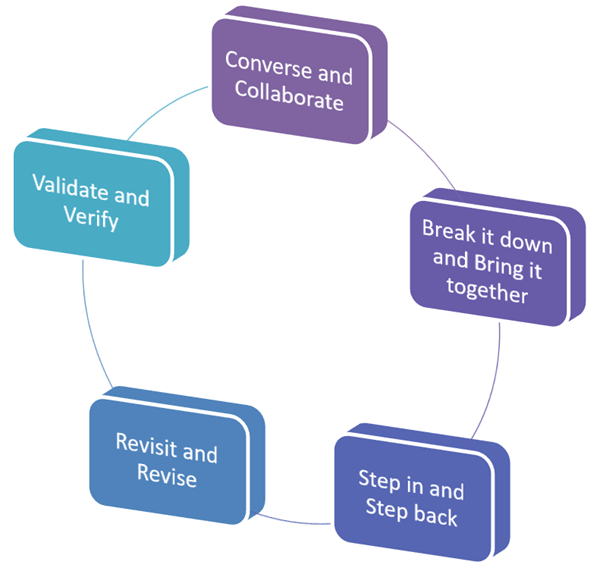Captain America: Cap is a great leader, field commander, and tactician. He led the Avengers for a long period of time, and his great experience makes him a seasoned commander on the battlefield.
He also creates the plans for the Avengers and has a great fighting spirit.
Skills: Planning and Monitoring
You need to be able to lead stakeholders. It is imperative for the Business Analyst to understand where we need to go and how we need to reach the end goal. If we need correction along the way, then we need to be able to drive it.
Black Widow: Natasha (Black Widow) has proven herself to be one of the best information gatherers in the Marvel Universe.
Skill: Elicitation
If you have seen Natasha talk to Loki in Avengers 1, you know how efficient she is in deriving information. Isn’t that what a Business Analyst does day in and day out? Elicitation lies at the core of what we do. Being able to drive conversations and collaborations is imperative for the business analyst role.
Dr. Strange: psychic abilities
Skill: To be able to understand what the customer wants based on what he says and doesn’t say
Elicitation is gathering information. We need to be able to see beyond the words, we need to be able to read between the lines, we need to be able to figure out the conflict between stakeholders, we need to be able to understand the problem. This ability to read information which isn’t articulated is really a super power for a Business Analyst.
Vision: superhuman analytical capabilities, and the ability to process information and make calculations with superhuman speed and accuracy.
Skill: Requirements Analysis
Oh well!! What can I say to this? Vision might have been envisioned when his creator saw a Business Analyst at work! One who was making sense out of the information and data at hand, figuring out the jigsaw puzzle to start seeing the pattern. Aren’t we absolutely skilled at this?
Nick Fury: He is a skilled tactician and an experienced leader.
Skills: Requirements Management and Communication
Nick Fury in theory does not have any superpowers. But well he is very good at bringing the team together and putting forth the mission at hand. That is a part of what we do. We should be able to bridge the gap between the problem and the solution by bringing everyone on board as a team. We need to get everyone on the same page. As a Business Analyst we need to resolve issues, try and understand risks, communicate and mitigate them and escalate them when required.
Iron Man: Tony stark is effectively a genius, able to constantly create new and improved technologies and makes upgrade after upgrade to his suit of cybernetic armour.
Skills: Non-functional requirement mindset
Tony stark constantly works on improving his suit and tech. He ensures his tools and toys are top notch, efficient and effective. As a Business Analyst we need to ensure performance, stability, reliability and security are in-built into our solutions. That’s what makes our solutions as good as Tony’s suits. We need to continuously be mindful of these parameters.
Thor: Is strong even without his hammer
Skill: No dependency on tools
Thor is god and his hammer makes him invincible. But he is powerful even without his hammer. Yes, we need tools to make our lives easier and smarter. But we should be able to adapt to new tools changing according to projects/organizations and still be the best Business Analyst we can be. We should be able to tap into our Business Analyst skill set irrespective of the tools.
Quicksilver: superhuman agility to move at great speeds
Skill: Being able to adapt to change
He might be a bit too fast!!! But it is our ability to incorporate changes to requirements at quick speed that can make us extremely effective. Agility is the way to go in today’s technologically disruptive environments.
Black Panther: ability to access the knowledge and experiences possessed by previous Wakandan kings/queens.
Skills: Learn from existing knowledge of mentors, books, articles; reach out to people in your organization or outside
Avoid re-inventing the wheel. There are methodologies, processes, formulae that people use across the spectrum that we can re-use. Don’t work in a silo, reach out. There is a sea of information and tools available that can help us in our journey in projects, utilize them. Ask: if you need help with a problem.
Collaborate: It makes for efficient and effective solutions.
Batman: Batman does not possess any superpowers; rather, he relies on his genius intellect, physical prowess, martial arts abilities, detective skills, science and technology, vast wealth, intimidation, and indomitable will.
Skill: Underlying competencies
We all are unique in our own ways. We have varied experiences, skill sets, strengths and weaknesses that we utilize for the success of the project. We run into problems and we try and reach a solution based on our own mental make-up. This is what sets us apart and brings in our unique value.
Being your own self is the key to enjoy playing your role. There are challenges we face in every role and project, being able to come back to our own self is powerful, being fully aware of our strengths and weaknesses is powerful, having a growth mindset is powerful.
What other super powers do you think a Business Analyst has?




 Every Business Analyst has her/his own strategy that works. These steps have been my go to when I feel overwhelmed. Whether it is a small requirement or a program of work, I take one step at a time and the progress comes with it.
Every Business Analyst has her/his own strategy that works. These steps have been my go to when I feel overwhelmed. Whether it is a small requirement or a program of work, I take one step at a time and the progress comes with it.